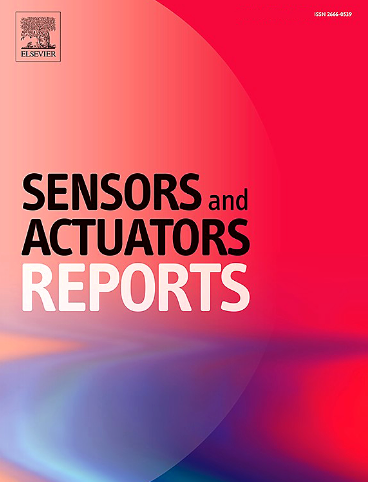Strategies for passivating microneedle-based sensors: development, characterization and comparison
IF 7.6
Q1 BIOTECHNOLOGY & APPLIED MICROBIOLOGY
引用次数: 0
Abstract
Microneedles (MNs) are sharp, pillar-like structures shorter than 1 mm. They can painlessly pierce the stratum corneum (SC), the outermost layer of the skin, and interface with the underlying dermal interstitial fluid, rich in biomarkers. Due to these properties, MNs have been widely investigated for several diagnostic applications. In particular, MN-based biosensors could enable the development of the new generation of minimally invasive continuous monitoring systems. To become a biosensor, the body or the tip of the needles must be functionalized. In addition, the area surrounding the MNs is usually passivated to prevent substrate interferences. Although passivation layers are widely used, there is a lack of characterization of such layers. This work aims at filling this gap, by developing, characterizing, and comparing six different passivation techniques. These include the application of polymethyl methacrylate (PMMA), Epotek 353ND, silicon oxide (SiO2), parylene, varnish and an adhesive film to microneedle arrays. The performance of each method was then assessed using electrochemical measurements, optical and SEM imaging, and contact angle analysis.
Significant variability was observed across the various methods and materials. When assessed in terms of the electrochemically active area available after passivation, the tape and parylene were the most promising layers, while varnish and epoxy were the worst performing materials. The PMMA performed better than the other liquid passivations, but still requires refinement due to the high degree of unwanted coverage of the needles. Finally, the SiO2 layer seemed to be a viable option, but also remains in need of additional optimization.

微针传感器钝化策略:发展、表征和比较
微针(MNs)是短于1毫米的尖锐柱状结构。它们可以无痛地穿透角质层(皮肤的最外层),并与富含生物标志物的真皮间质液接触。由于这些特性,纳米粒子已被广泛研究用于几种诊断应用。特别是,基于mn的生物传感器可以促进新一代微创连续监测系统的发展。要成为生物传感器,身体或针尖必须功能化。此外,纳米粒子周围的区域通常被钝化以防止衬底干扰。虽然钝化层被广泛使用,但缺乏对钝化层的表征。这项工作旨在填补这一空白,通过发展,表征和比较六种不同的钝化技术。其中包括将聚甲基丙烯酸甲酯(PMMA)、Epotek 353ND、氧化硅(SiO2)、聚对二甲苯、清漆和粘接膜应用于微针阵列。然后使用电化学测量、光学和扫描电镜成像以及接触角分析来评估每种方法的性能。在不同的方法和材料中观察到显著的可变性。当评估钝化后可用的电化学活性面积时,胶带和聚对二甲苯是最有前途的层,而清漆和环氧树脂是表现最差的材料。PMMA表现得比其他液体钝化更好,但由于针的高度不需要的覆盖,仍然需要改进。最后,SiO2层似乎是一个可行的选择,但仍然需要额外的优化。
本文章由计算机程序翻译,如有差异,请以英文原文为准。
求助全文
约1分钟内获得全文
求助全文
来源期刊

Sensors and Actuators Reports
Multiple-
CiteScore
9.60
自引率
0.00%
发文量
60
审稿时长
49 days
期刊介绍:
Sensors and Actuators Reports is a peer-reviewed open access journal launched out from the Sensors and Actuators journal family. Sensors and Actuators Reports is dedicated to publishing new and original works in the field of all type of sensors and actuators, including bio-, chemical-, physical-, and nano- sensors and actuators, which demonstrates significant progress beyond the current state of the art. The journal regularly publishes original research papers, reviews, and short communications.
For research papers and short communications, the journal aims to publish the new and original work supported by experimental results and as such purely theoretical works are not accepted.
 求助内容:
求助内容: 应助结果提醒方式:
应助结果提醒方式:


